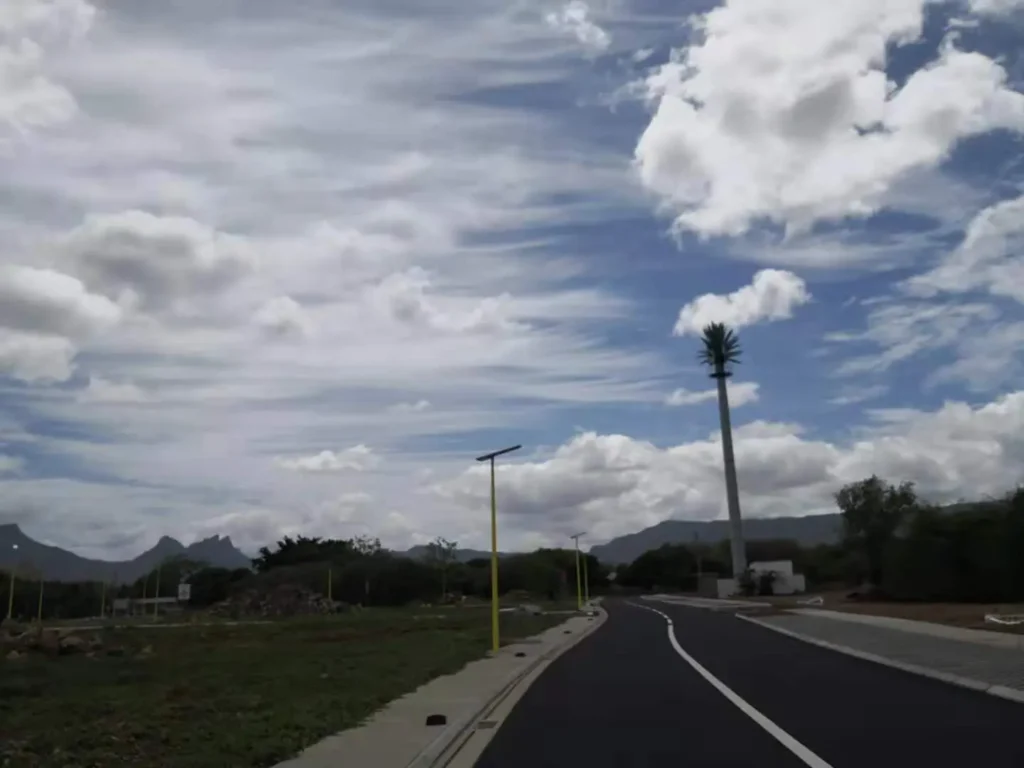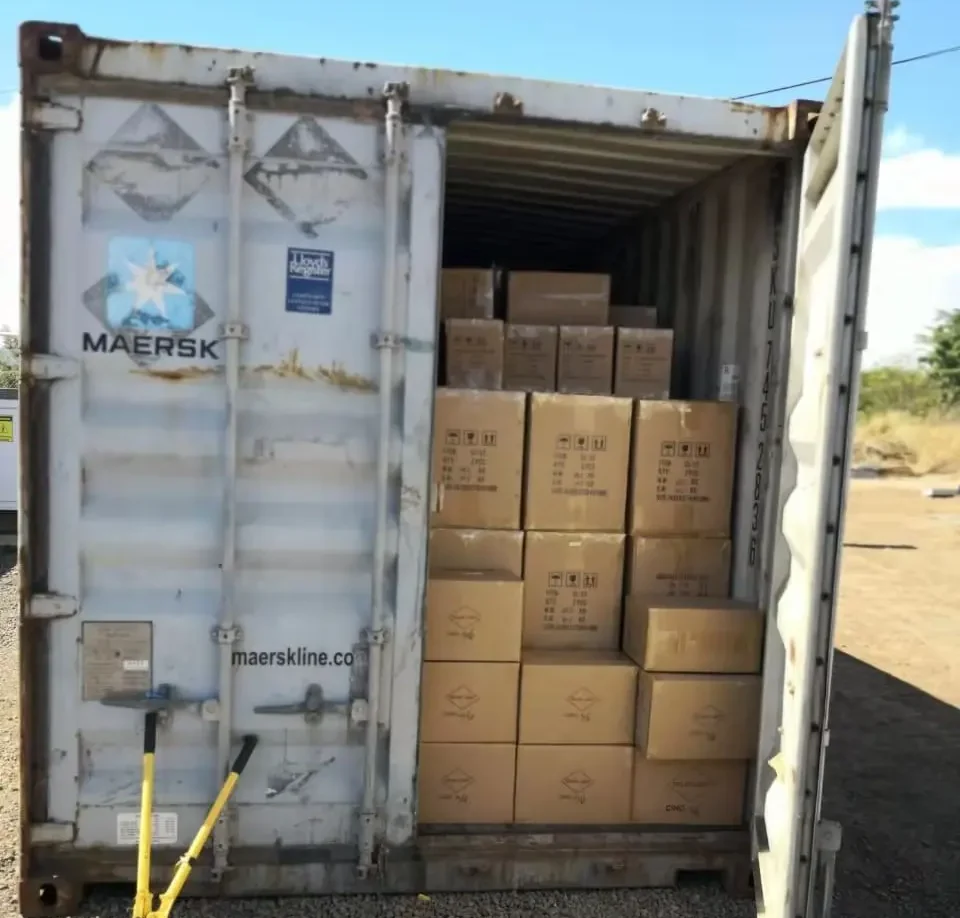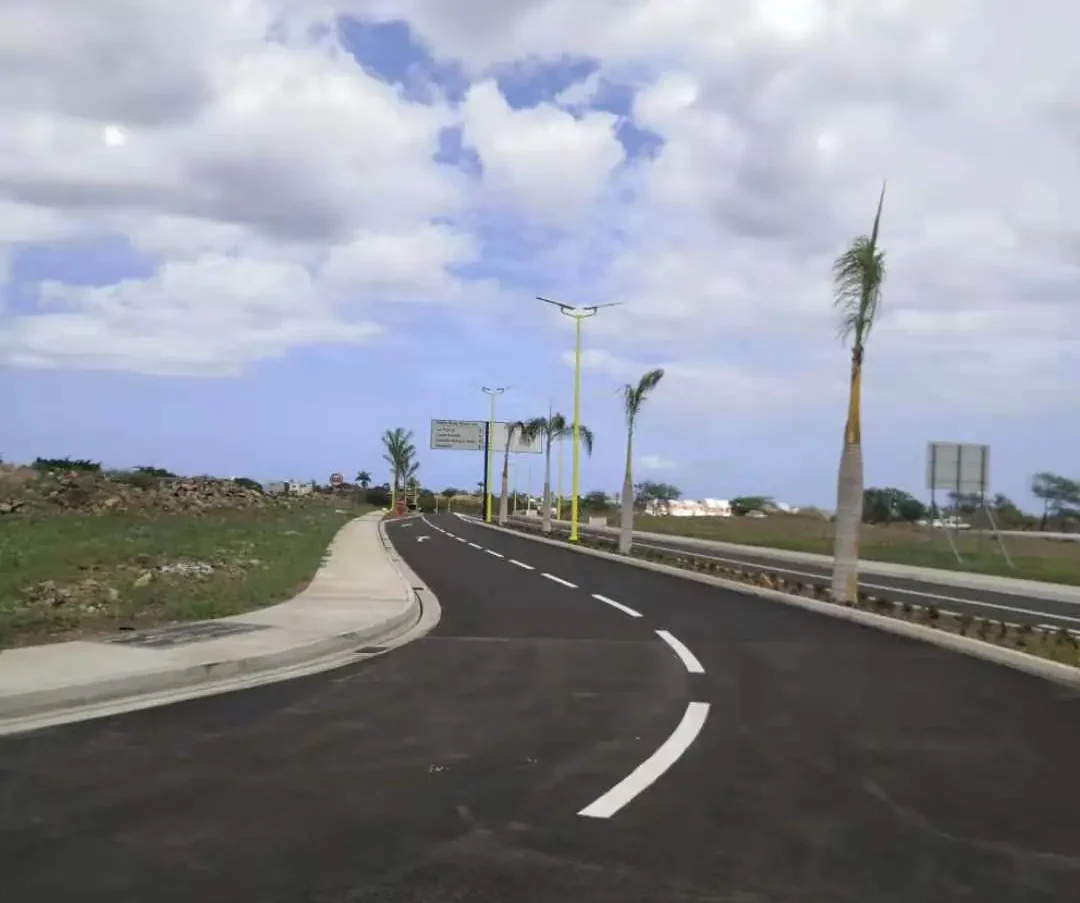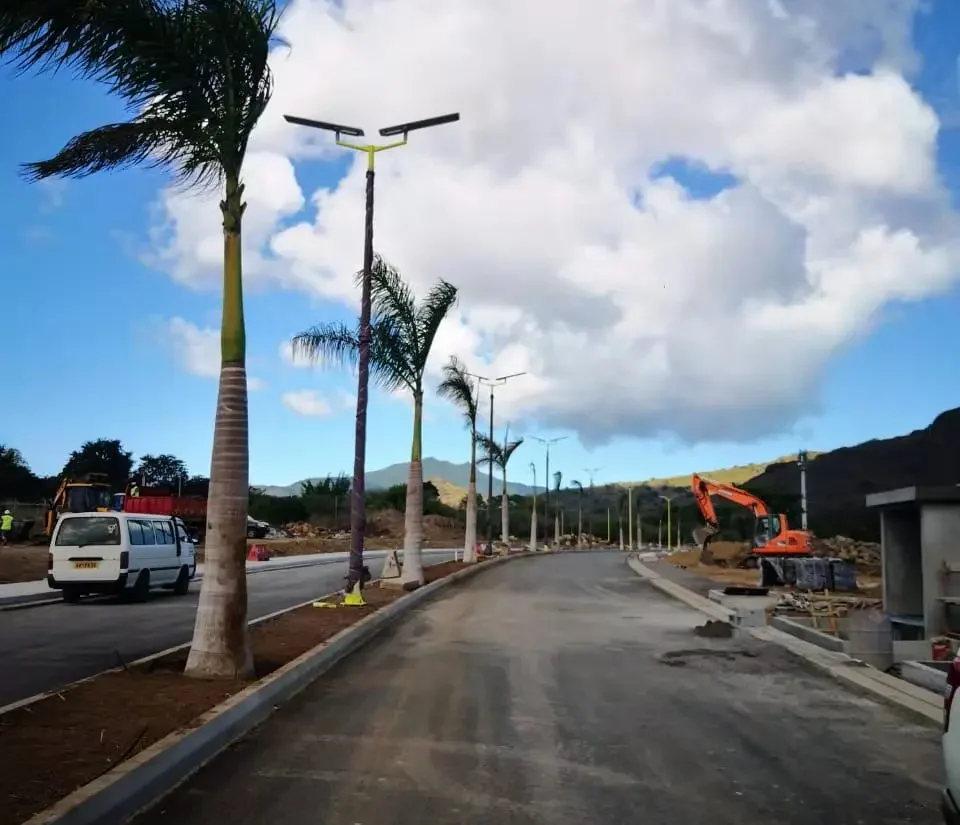“Long rainy seasons, unstable power supply, and high maintenance costs”—Mauritius’ road lighting has long faced these three challenges. How does the Sresky Atlas series of solar street lights redefine the game with its 10-day rainy weather endurance technology?
1. Project Background | Project Background
Mauritius, an island nation renowned for its eco-tourism and tropical charm, is undergoing rapid development. To support economic growth and a thriving tourism industry, the local government is committed to improving infrastructure, with road lighting as a critical focus. This project targeted newly constructed roads and infrastructure zones in Mauritius, deploying a total of 150 Sresky Atlas series solar street lights.
Project Overview
-
Location: Newly constructed roads and key infrastructure areas in Mauritius
-
Scale: 150 high-performance solar street lights
-
Objective: To provide stable, green, and high-brightness lighting that enhances nighttime traffic safety and road usage experience
-
Partners: Local municipal infrastructure departments, transportation authorities, and engineering firms
Through close collaboration with local stakeholders, this project aims to establish a modern, sustainable lighting system for Mauritius—one that also serves as a replicable model for other tropical regions.
2. Pre-Installation Logistics
The success of the project began with seamless logistics coordination. The 150 Sresky Atlas solar street lights were shipped in containers from the production facility to the port of Mauritius. The transportation process followed international standards, and smooth customs clearance ensured timely delivery.
3. Challenges: Illuminating Mauritius’ Path to Development
As a tropical island nation, Mauritius faces distinct infrastructure challenges, particularly in public lighting. These are rooted in both environmental conditions and economic constraints.
3.1 Energy Crisis
Mauritius is heavily dependent on imported fossil fuels, resulting in high energy costs. In remote or newly developed areas, poor grid coverage and unstable electricity make it difficult to meet modern lighting needs.
3.2 Environmental and Climate Pressures
Mauritius has a national commitment to environmental protection and sustainable development, as it seeks to maintain its status as an eco-tourism destination. Grid-powered lighting contributes to carbon emissions and requires frequent maintenance, which contradicts green development goals. Additionally, high humidity, heat, and prolonged rainy seasons demand robust, climate-adapted lighting systems.
3.3 Infrastructure Requirements
Newly developed roads and public areas require reliable lighting to ensure safety for drivers and pedestrians while keeping operational costs low. The cost of installing and maintaining grid-connected streetlights poses a major barrier.
Faced with these challenges, Mauritius needed a solution that was sustainable, durable, and cost-effective. The Sresky Atlas series solar street lights emerged as the ideal answer.
4. Solution: Sresky Atlas Series—The Fruits of Exceptional Engineering
The Sresky Atlas series solar street lights feature advanced engineering that directly addresses Mauritius’ core infrastructure challenges.
Key Technologies and Advantages
-
Extended Battery Life:
Featuring ALS 2.4 adaptive lighting technology, these lights operate continuously for more than 10 rainy days, ensuring year-round performance. -
High-Brightness Output:
With a maximum output of 10,000 lumens, they meet lighting standards for major roads and intersections. -
Durable Battery:
High-density lithium-ion batteries support up to 2,000 charge cycles and are optimized for the island’s high-temperature, high-humidity environment. -
Smart Management:
Three lighting modes—including PIR motion-sensor activation—enhance energy efficiency and intelligent lighting control. -
Convenient Maintenance:
Modular design allows for on-site component replacement at the lamp post, minimizing both time and cost for maintenance.
These features not only solve lighting issues in Mauritius but also deliver long-term economic and environmental benefits.
5. Lighting Effectiveness Demonstration
Following implementation, the 150 Sresky Atlas solar street lights delivered measurable improvements across multiple areas:
5.1 Road Upgrades
All newly constructed main and secondary roads, along with intersections, are now equipped with solar lighting, providing consistent and effective coverage and illuminating the city’s evolving infrastructure.
5.2 Lighting Effects
High-brightness yellow lighting improves visibility of road markings and landscaping, enhancing driver comfort and nighttime navigation.
5.3 Environmental Enhancement
The modern design of the lamp posts integrates seamlessly with Mauritius’ green spaces, supporting a cleaner and more organized urban aesthetic.
5.4 Enhanced Safety
Stable lighting greatly increases safety for both pedestrians and vehicles, benefiting both local residents and tourists.
5.5 Energy Savings and Sustainability
Using 100% renewable solar energy, the lighting system reduces dependence on grid power and significantly lowers carbon emissions, aligning with Mauritius’ sustainability goals.
Real-world data and feedback validate the reliability and effectiveness of Sresky products in this project.
6. Project Highlights and Key Specifications
| Project Indicators | Detailed Description |
|---|---|
| Project Location | Mauritius |
| Deployed Product Series | Sresky Atlas Solar Street Lights |
| Number of Units Installed | 150 street lights |
| Key Technologies Applied | ALS 2.4, TCS, BMS, PIR |
| Enhanced Reliability | 10+ days of continuous lighting during rainy weather, ensuring 100% lighting year-round |
| Annual Energy Savings | Substantial reduction in grid electricity consumption through 100% solar energy use |
| Carbon Emissions Reduction | Significant emissions reduction, achieving near zero-carbon lighting operations |
| Public Safety Improvements | Enhanced visibility and security on newly developed roads and intersections |
These metrics underscore the outstanding performance of the Sresky Atlas series in delivering sustainability, reliability, and safety—making it a strong candidate for future deployments.
7. Summary and Future Promotion Potential
This project in Mauritius has proven the adaptability and reliability of the Sresky Atlas series under tropical conditions. It also offers valuable insights for future applications in:
-
Urban Expansion: Providing green, grid-free lighting for new residential and commercial zones
-
Rural Upgrades: Enhancing infrastructure in remote or off-grid areas
-
Airport Perimeters: Securing critical transportation hubs with sustainable lighting
Sresky remains committed to global partnerships that advance sustainable development—bringing light, safety, and hope to communities worldwide.
Table of Contents



